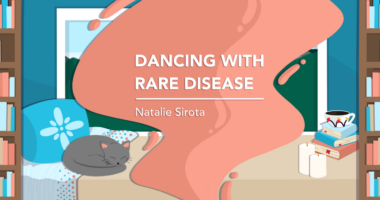How to make doctors take your angioedema symptoms seriously
Last updated July 25, 2025, by Danita LaShelle Jones
When I enter an emergency room with my daughter Ladybug, who has hereditary angioedema (HAE), I don’t waste time giving a strong argument for how her disease is the cause of her symptoms.
Here’s what I lay down from the start:
- State the disease’s name during introductions. As soon as the physician or team members walk into the room, I immediately alert them that she has HAE. I then ask if they’re familiar with that disease. Even if they say yes, I jump right to my next step.
- List all the disease’s symptoms. I don’t only list the current symptoms Ladybug is experiencing; I list all of them that she has ever had. This sets the tone that we are all very familiar with HAE’s symptoms.
- Emphasize that this isn’t normal. I let the doctors know that what they see or don’t see isn’t normal. For example, because Ladybug has full lips, it’s somewhat difficult to detect a lip swell before it’s too late. I share pictures of her face so they know what she normally looks like. Or, for intestinal flares, I inform the doctors of her high pain tolerance and immediately debunk the idea that it could be constipation.
- Tell them about other family physicians who are familiar with HAE symptoms. I recite them all — her primary care physician, her immunologist, her allergist, and her pulmonologist. I ensure that it’s clear to any new doctor I’m talking to that there’s a list of people to call if further information or clarification is needed.
- Describe the treatment plan. After completing all the previous steps, I inform the doctor of the necessary treatment plan and who created it. I use the correct medicine names, dosages, and what needs to happen right after it’s administered.
- Ask if the doctor has any questions for me.
Establish your expertise
My sister, a board-certified physician, jokingly refers to my system as the Fire Hydrant’s Worth of Information method, a blasting of sorts. Why? Because there are no breaks in my steps. I deliver my points calmly and clearly, but in rapid succession.
I want these new-to-us doctors to understand that we are knowledgeable in our HAE journey — and that’s meant to be taken seriously. While I’m not an expert in HAE, Ladybug is the expert regarding her body, and I’m an expert on our past experiences in healthcare spaces. We all need to work together.
I arrived at this fire hydrant strategy because I’ve experienced enough situations when Ladybug and my theories were not given their proper weight, causing treatment to be delayed as a result.
Prepare with research, and prepare to advocate
After experiencing these incidents several times, I decided to arm myself with as much knowledge as possible to be ready for future interactions.
In most cases, the hospitalists weren’t being dismissive; it’s just that HAE symptoms can often be mistaken for other medical conditions. In a busy emergency room, there typically isn’t enough time to conduct thorough research to form the correct diagnosis.
So, I try to help. After my fire hydrant method, I provide the fruit of my preparation, which has included:
- recordings and images of previous angioedema symptoms, plus how Ladybug feels and looks from case to case
- possible triggers based on her history and our general HAE knowledge
- the professional research I’ve collected over the years about HAE, its triggers, and symptoms, as well as potential side effects from medications she’s on.
While Ladybug is young, it’s my responsibility as her caregiver to advocate firmly and quickly if I feel something is not being handled correctly. In the midst of a flare, it’s imperative that we treat it swiftly. And as important as politeness is, I do what I must to pursue immediate, accurate treatment.
Fear of overstepping or coming off as impolite must not outweigh my daughter’s urgent health needs, nor should it impede your care — go ahead and let that fire hydrant flow.
Angioedema News is strictly a news and information website about the disease. It does not provide medical advice, diagnosis, or treatment. This content is not intended to be a substitute for professional medical advice, diagnosis, or treatment. Always seek the advice of your physician or other qualified health provider with any questions you may have regarding a medical condition. Never disregard professional medical advice or delay in seeking it because of something you have read on this website. The opinions expressed in this column are not those of Angioedema News or its parent company, Bionews, and are intended to spark discussion about issues pertaining to angioedema.
Recent Posts
- Study confirms Takhzyro’s long-term benefits for HAE patients
- First-of-its-kind therapy Dawnzera wins FDA approval for HAE
- Deucrictibant set for key trial in acquired angioedema
- Even if we have common symptoms of HAE, each patient is unique
- Sebetralstat gets to keep orphan drug status for HAE in Europe





